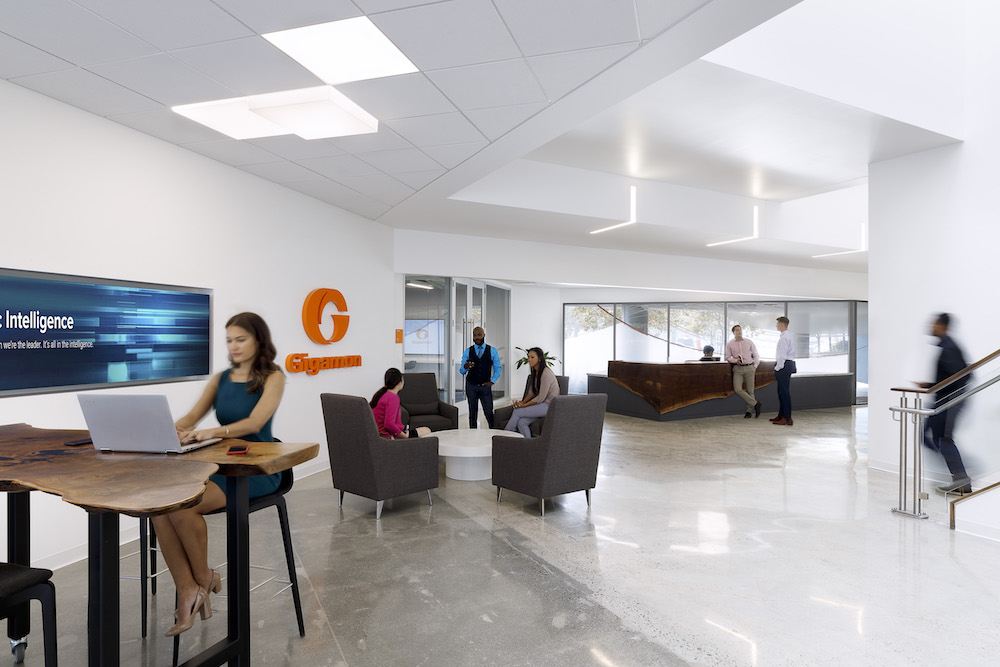
Revisiting the Importance of the Physical Office as the Digital Revolution Accelerates
The Face of the Future
Real-world examples and workplace strategists offer insightful points of view.
For example, it’s now three years since Airbnb first offered more rooms than the world’s top five hotel brands put together. This remarkable feat was achieved without the rental pioneer buying a single brick for users. More recently, in March 2021, branchless UK challenger Monzo bank attracted its four-millionth customer, an impressive milestone reached in a handful of years.
“On its own, physical office branding is arguably less important today than ever before,” says Jed Backhouse, a digital brand consultant at Infinite Global. “Instead, what is crucial is the alignment of a physical brand with digital and experiential dimensions.
“This means ensuring an organization’s purpose and values are consistently demonstrated, communicated, and manifested across all brand touchpoints. That includes the workplace environment, but also media, marketing, and other interactions. Therefore, the office can, in some ways, now be considered part of the media mix for brands.”
Certainly, business leaders would be foolish to neglect investment in office branding and the working environment, says Steve Sharp, director at Fat Cow Media. This is due to the “enormous potential to enhance company reputation for employees, customers, and investors alike.
“While a tangible brand identity remains the cornerstone of any good marketing strategy, it’s not enough to rely on digital experiences,” he says. “Physical experiences leave a longer-lasting impression and offer a more personal opportunity to reach consumers.”
Making Impressions to Boost Reputation
Beth Hampson, commercial director at The Argyll Club, which has 38 luxury workspaces across London, agrees. “Carefully selected color palettes, logos, and website designs are key…but organizations may be missing a huge trick by not considering what the four walls around them say about their brand,” she says. This approach adds value internally and externally through workplace branding.
“While a lot of business is conducted via tech these days, the most important decisions often still happen in person,” adds Hampson. “Why, then, are businesses pumping money into their digital brand, but overlooking the impression given to clients, investors or recruits after a simple meeting at the office?”
The physical experiences leave a longer-lasting impression and offer a more personal opportunity to reach consumers.
Hampson adds, “Businesses shouldn’t forget the power of that first impression when you walk through the door, especially in this digital age. As life is increasingly digitalized and automated, the physical and tangible may become more valuable when attempting to stand out from the crowd.”
“Office branding has been an essential element of the workplace for centuries, and the birth of the department store accelerated its evolution,” says Dr. Teea Palo, lecturer in marketing at University of Edinburgh Business School. However, office branding has been dialed up in the last two decades, in America especially.
For Backhouse, Apple leads the way. “Their buildings designed by Lord Norman Foster are incredible, physical and environmental articulations of a brand’s purpose and values,” he says. “Apple’s mission statement includes ideas around simplicity, innovation, and cross-pollination, which are all apparent in the design of their offices and shops, as they are in the physicality of its products.”
At Facebook, the potency of physical office branding, or lack of it, is used in an unorthodox and perhaps slightly threatening way. At the social media titan’s California campus, Facebook’s branding is the focal point as visitors enter, but the tatty signage of the previous occupier, Sun Microsystems, has been retained at the exit. A mistake?
“No, it’s used as a constant reminder of the balance between winners and losers in the industry, a direct reminder to employees of the need to stay focused,” says Tom Carroll, head of Europe, Middle East, and Africa corporate research at real estate services firm JLL.
Location and Heritage Are Brand-Boosters
American attitudes toward office branding might be too in-your-face for some, though. In the UK, a more understated approach is required, according to Peter Matthews, founder and chief executive of digital brand designer Nucleus.
“Inside-out branding has always been important, and being proud of the brand you work for is a natural aspiration for many,” he says. “But it can be overdone for British sensibilities, when some brand consultants and CEOs demand employees to ‘live the brand.’”
This jibes with Lee Penson, chief executive of world-renowned architecture and interior design studio Penson. “Brand celebration should be displayed as subtle suggestions at the right moment,” he says. “Client-facing environments must touch on branding, but not overdo it.”
According to Penson, the reception area may not be the best place to push branding. Penson points to Sony PlayStation’s European headquarters in London, which his company designed. “The space was planned around their brand logo and has clusters of clever and cool spaces,” he says. “It’s little touches like this that make our clients feel confident in their space. They live and breathe their brand implicitly. Images and banners will not do this.”The design process from day one should include conversations about the look, feel, and branding that reflect the client’s culture and product story. This requires thoughtful conversations around experience when selecting an architect.
Office location and the heritage of a building, especially in a city, can help boost company reputation, too. “Trendy London startups may be more inclined to set up shop in the hipster hotspot of Shoreditch rather than Paddington, because the area aligns with their ambitions for branding and company values,” says Bradley Baker, director at office developer CO-RE.
Finally, for business leaders seeking advice about office branding, Hampson offers a conclusion: “Start small and gradually think bigger,” she says. “Look at workspace itself, then zoom out to your building, your address, your neighborhood. What would a visitor think when hearing about or seeing each for the first time?
“If you aren’t confident a potential investor, employee, or client would align each of these physical images with your brand values, it may be time to consider an office move.”
There is great value in looking at best practices and listening to industry experts. At the end of the day, the most important consideration is that one size doesn’t fit all. Projects need to be customized, and a balance must be maintained.
It’s a hybrid world…a world where the only constant is flux. So we need to be flexible and forward thinking. We need to embrace digital advancements but also appreciate the potential advantages of good old-fashioned bricks-and-mortar. Especially when the physical and the cultural come together—and people are at the center of workplace solutions.
Robin Weckesser is the CEO of a3 Workplace Strategies, a workplace consulting group based in San Jose and serving companies throughout the United States and worldwide. The firm provides a full range of project management and facilities management services, including strategic planning; change management; site selection; design, construction, and relocation oversight; space programming; and open office/collaborative environments. For more information email Robin at rweckesser@a3workplace.com.




Sorry, the comment form is closed at this time.